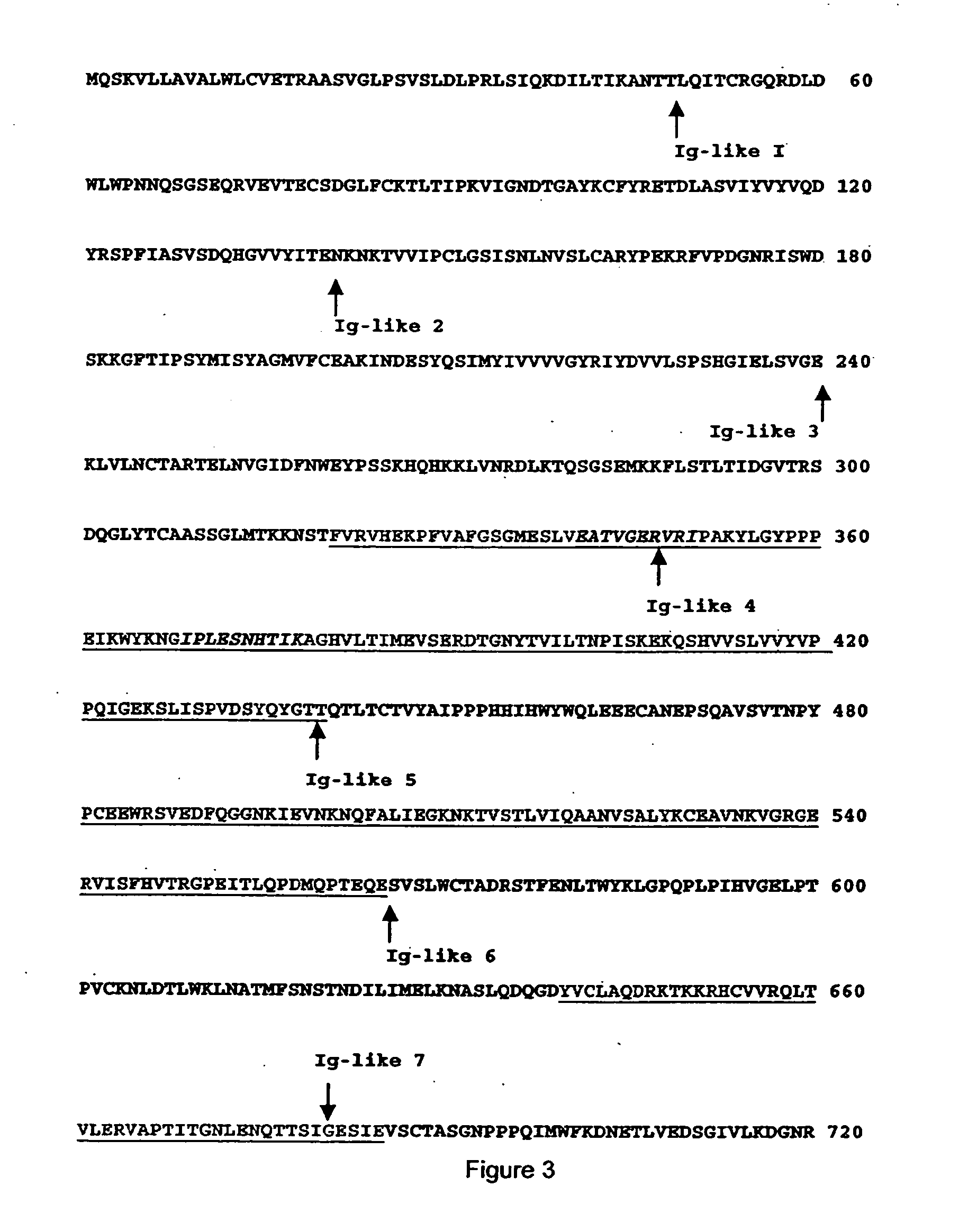Cytokine receptor modulators, method of identifying same, and method of modulating cytokine receptors activity with same
a cytokine receptor and cytokine receptor technology, applied in the field of cytokine receptor agonists and antagonists, can solve the problems of high toxicity and secondary effects, limited treatment options for cytokine/lymphoine/interferon, and association with significant morbidity and/or mortality, and achieves greater metabolic stability, longer duration of action, and high potency
- Summary
- Abstract
- Description
- Claims
- Application Information
AI Technical Summary
Benefits of technology
Problems solved by technology
Method used
Image
Examples
example 1
VEGFR
Identification of VEGFR2 Antagonists
[0087] VEGF is a proliferating agent for endothelial cells. Its receptor (VEGFR) is present at the plasma membrane of endothelial cells as a monomer and its homodimerization is necessary for generating autophosphorylation via its intrinsic tyrosine kinase domain.
[0088] The method of identifying VEGFR antagonists of the present invention is based on the localization of extracellular flexible regions including regions between domains and juxtamembranous regions of the receptor that are important for the appropriate conformation and oligomerization of the subunits of the receptor and its resulting activation. These regions were established based on crystal structure data provided by crystallography. The antagonists able to bind to these regions block the signal transduction by interfering with the oligomerization. The regions so identified appear in green in FIG. 3. One of those regions is located under the IG-like 3 domain where ligand bind...
example 2
Insulin-Like Growth Factor-1 Receptor (IGF-1R)
[0094] IGF-1 is a small peptide and a member of a family of insulin related peptides. It consists of 70 amino acids and has structural similarity with insulin. IGF-1 is secreted by many tissues (cartilage, bone, epithelium, endothelium) but mostly by the liver to act on other tissues in an endocrine fashion. It exerts its actions by binding to IGF-1R upon which it sends a mitogenic signal. It can also protect cells from apoptosis, promote proliferation, regulate cell adhesion and motility and differentiation. The receptor itself is expressed in most cell types except in the hepatocytes. Because of its growth inducing functions, IGF-1R is also very much involved in malignant transformation or differentiation in various types of cancer such as glioblastomas, neuroblastomas, prostate, breast and ovarian cancer.
[0095] IGF-1 plays a critical role in cell growth, survival and metastatic differentiation. IGF-1R is a transmembrane tyrosine kin...
example 3
Interleukin 4 (IL-4)
[0102] IL-4 is a key cytokine involved in the development of allergic inflammation and allergy. It is generated early on in the process of inflammation in asthma. In allergy it is associated with the production of IgE immunoglobulins by B lymphocytes and will also up-regulate the expression of the IgE receptor on cell surface of B-lymphocytes, basophils and mast cells. In asthma it induces the expression of vascular cell adhesion molecule (VCAM-1) on vascular endothelium. This effect leads to direct migration chemotaxis of T lymphocytes, monocytes, basophils and eosinophils to the inflammatory site on pulmonary vascular endothelial cells. IL-4 inhibits eosinophil apoptosis and promotes eosinophilic inflammation by augmenting their presence in part by increasing expression of eotaxin. Another essential biological effect of IL-4 is Th2 differentiation and proliferation; in this process IL-4 diminishes T lymphocyte apoptosis. The II-4 receptor is a cell-surface pro...
PUM
| Property | Measurement | Unit |
|---|---|---|
| concentrations | aaaaa | aaaaa |
| concentrations | aaaaa | aaaaa |
| pH | aaaaa | aaaaa |
Abstract
Description
Claims
Application Information
 Login to View More
Login to View More - R&D
- Intellectual Property
- Life Sciences
- Materials
- Tech Scout
- Unparalleled Data Quality
- Higher Quality Content
- 60% Fewer Hallucinations
Browse by: Latest US Patents, China's latest patents, Technical Efficacy Thesaurus, Application Domain, Technology Topic, Popular Technical Reports.
© 2025 PatSnap. All rights reserved.Legal|Privacy policy|Modern Slavery Act Transparency Statement|Sitemap|About US| Contact US: help@patsnap.com



